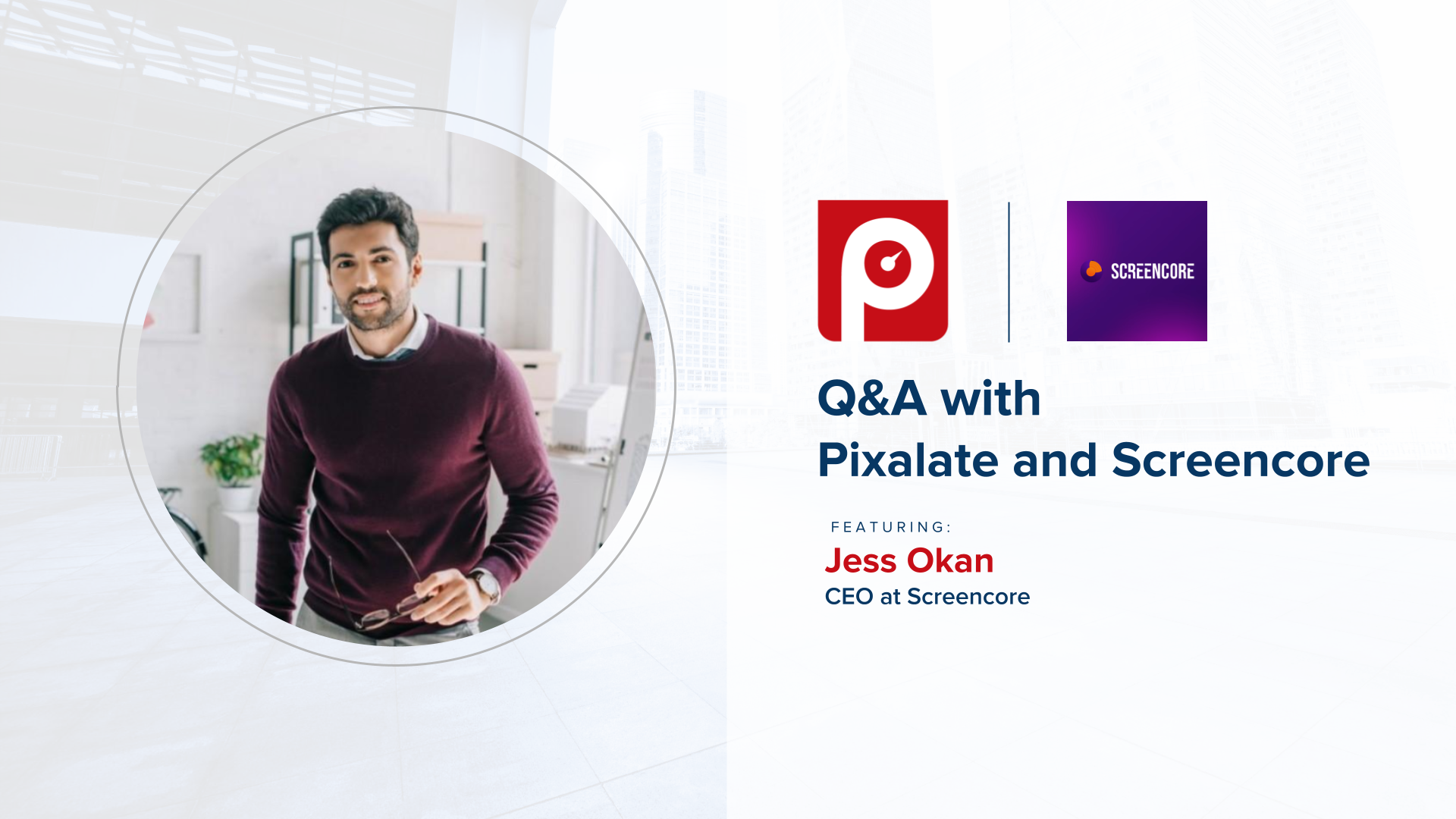IPv6 — or “Internet Protocol Version 6” — is an upgrade over the internet’s current Internet Protocol infrastructure, IPv4.
In this post, Pixalate shares new data regarding which Internet Service Providers (ISPs) are supporting the most IPv6-enabled traffic, and whether or not IPv6 traffic patterns differ between devices and connection types (such as Home Internet vs. Cellular).
Marketers should care about IPv6 adoption rates because it leads to improved targeting and measurement capabilities. As IPv6 grows in prevalence, the industry-wide discussion on quality will be naturally nudged in the right direction.
What is IPv6?
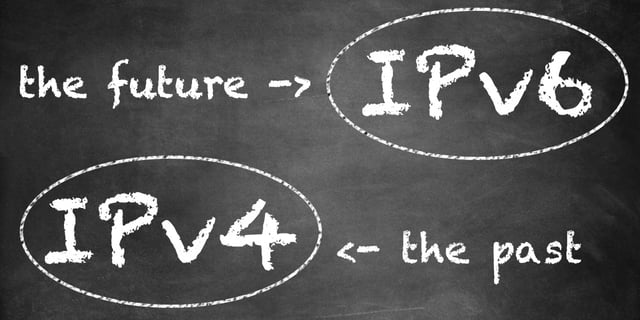
In short, every computer connected to the internet is given an address (your IP addresses). The current standard (IPv4) provides addresses that are 32 bits long.
The IPv4 framework unlocks about 3.4 billion unique addresses. However, given the explosion of the Internet of Things (IoT), we are faced with the needed for more IP addresses.
Enter IPv6, which allows for 128-bit addresses. This unlocks roughly 340 trillion, trillion, trillion unique addresses.
You can test your IPv6 compatibility here.
Which ISPs support the most IPv6 traffic?
Based on Pixalate’s October 2017 data, here are the top 10 ISPs in terms of raw IPv6-enabled traffic. This data is reflective of the programmatic marketplace from October 2017.
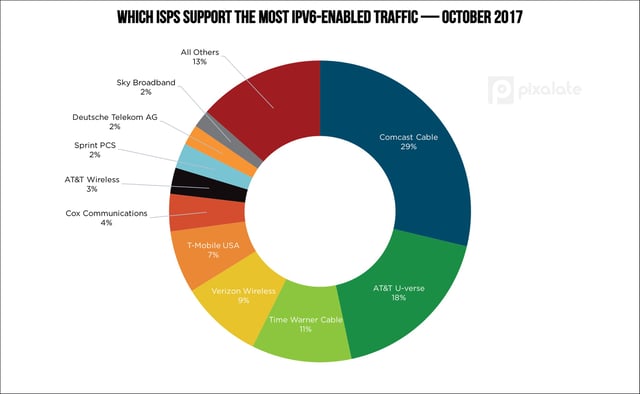
- Comcast Cable - 28.7%
- AT&T U-verse - 17.9%
- Time Warner Cable - 10.7%
- Verizon Wireless - 8.8%
- T-Mobile USA - 6.7%
- Cox Communications - 4.0%
- AT&T Wireless - 2.8%
- Sprint PCS - 2.7%
- Deutsche Telekom AG - 2.2%
- Sky Broadband - 1.9%
- All other providers - 13.5%
Mobile supports the highest IPv6 rate, at over 60%
Nearly two-thirds (61.6%) of programmatically-served mobile app ad impressions are delivered to an IPv6-enabled device, according to Pixalate’s data. That’s the highest rate among all major devices:
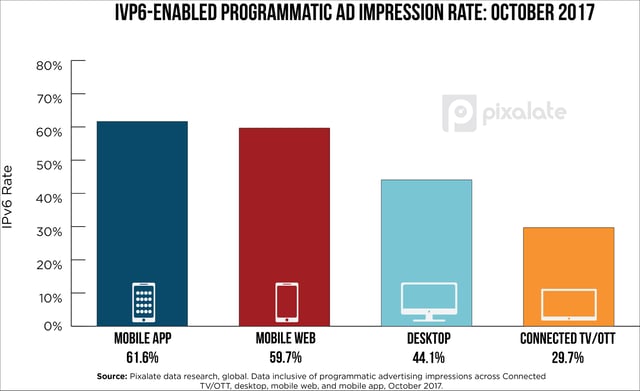
- Mobile app: 61.6%
- Desktop: 59.7%
- Mobile app: 44.1%
- Connected TV/OTT: 29.7%
Mobile IPv6 rates are almost 2x higher when using cell data
According to Pixalate’s data, whether or not a mobile device is IPv6-enabled might depend on whether or not the user is accessing the internet via a home-based connection (like WiFi) or via cellular data.
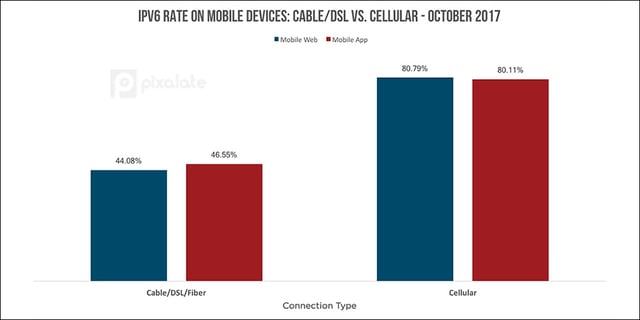
Mobile apps:
- 46.55% of ad impressions served to users who are connected to home-based internet (Cable/DSL/Fiber) are IPv6-enabled, according to Pixalate’s data.
- The rate is 80.11% for users connected via cellular data.
Mobile web:
- Pixalate’s data shows that 44.08% of mobile web ad impressions served to Cable/DSL/Fiber-connected users are IPv6-enabled.
- That number skyrockets to 80.79% for mobile web connectivity via cellular data.
Which ISPs have the highest percentage of IPv6-enabled inventory?
While the above pie chart shows the top 10 ISPs in terms of overall IPv6-enabled traffic, this list represents the top 10 ISPs in terms of the percentage of their traffic that is IPv6-enabled. This data is based on Pixalate’s measurements from October 2017.
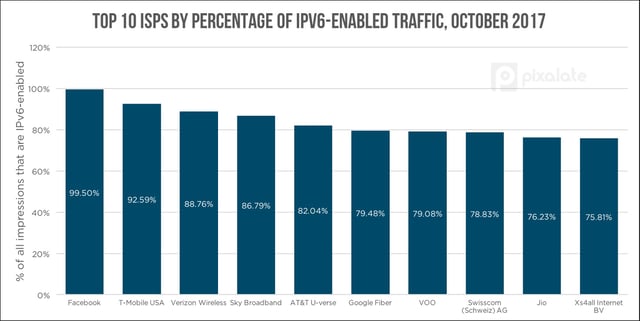
- Facebook - 99.50%
- T-Mobile USA - 92.59%
- Verizon Wireless - 88.76%
- Sky Broadband - 86.79%
- AT&T U-verse - 82.04%
- Google Fiber - 79.48%
- VOO - 79.08%
- Swisscom (Schweiz) AG - 78.83%
- Jio - 76.23%
- Xs4all Internet BV - 75.81%
Only four companies appear on both top 10 lists (most raw IPv6-enabled traffic, and highest percentage of traffic that is IPv6-enabled):
- Comcast Cable
- AT&T U-verse
- Sky Broadband
- Deutsche Telekom AG
Cox (9.27%), Sprint PCS (8.99%), Time Warner Cable (8.74%), AT&T Wireless (6.84%), and Spectrum (2.51%) are among the top companies in terms of raw IPv6-enabled traffic, but all have below 10% of total traffic supporting IPv6.
IPv6 rates have rapidly grown this decade
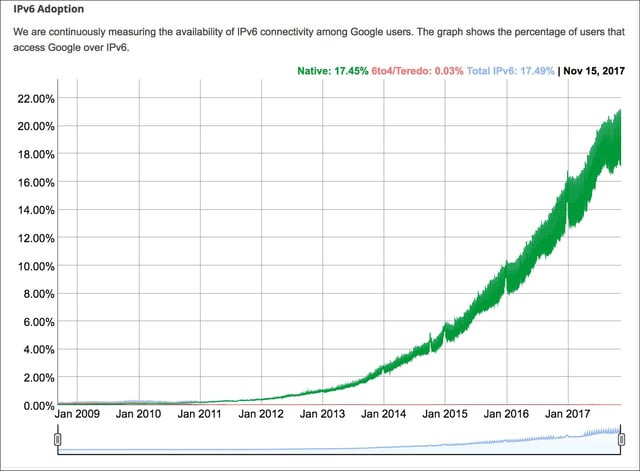 The above image comes from Google's IPv6 tracker. The data represents the percentage of users that access Google over IPv6. The figure has increased from:
The above image comes from Google's IPv6 tracker. The data represents the percentage of users that access Google over IPv6. The figure has increased from:
- About 0.1% in January 2010
- About 1% in January 2013
- About 10% in January 2016
- About 17%-20% now (November 2017)
Want more data-driven insights? Sign up for our blog!


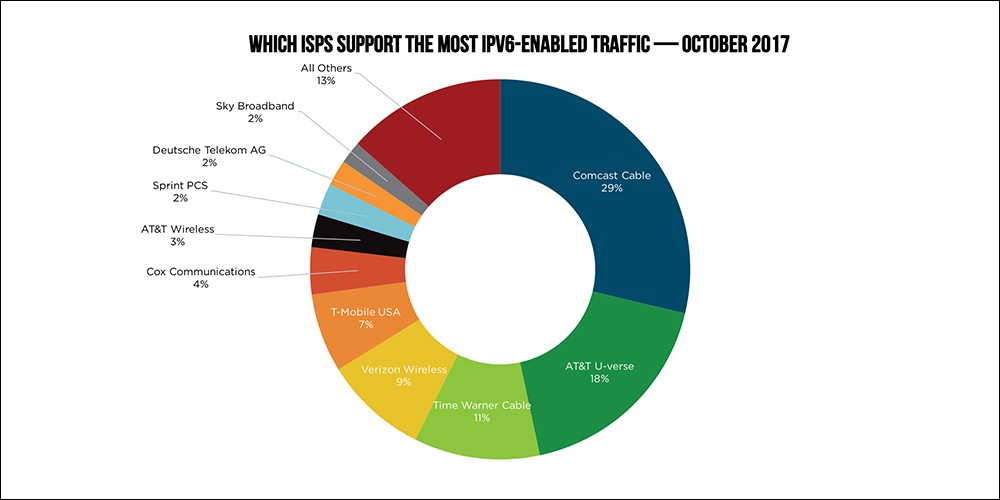





 The above image comes from
The above image comes from 
